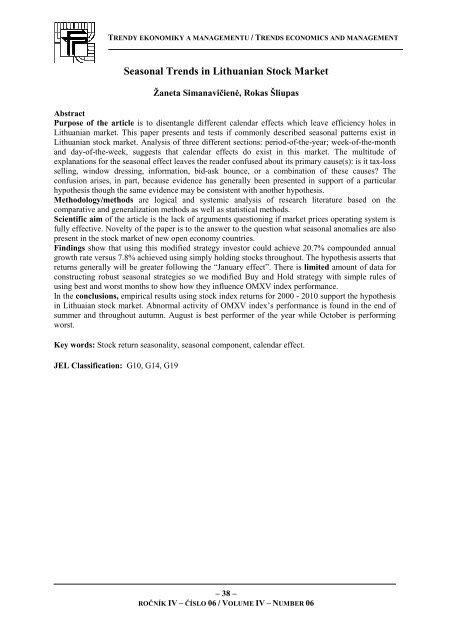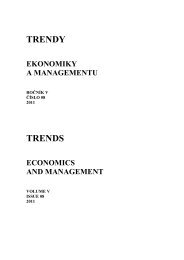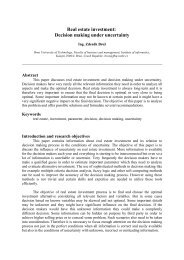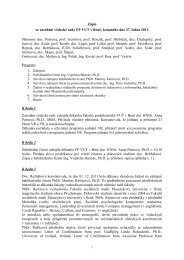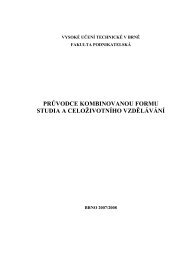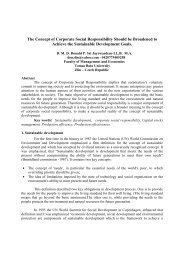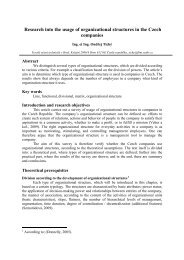Stáhnout toto číslo ve formátu PDF - Fakulta podnikatelská - Vysoké ...
Stáhnout toto číslo ve formátu PDF - Fakulta podnikatelská - Vysoké ...
Stáhnout toto číslo ve formátu PDF - Fakulta podnikatelská - Vysoké ...
Create successful ePaper yourself
Turn your PDF publications into a flip-book with our unique Google optimized e-Paper software.
TRENDY EKONOMIKY A MANAGEMENTU / TRENDS ECONOMICS AND MANAGEMENT<br />
Seasonal Trends in Lithuanian Stock Market<br />
Žaneta Simanavičienė, Rokas Šliupas<br />
Abstract<br />
Purpose of the article is to disentangle different calendar effects which lea<strong>ve</strong> efficiency holes in<br />
Lithuanian market. This paper presents and tests if commonly described seasonal patterns exist in<br />
Lithuanian stock market. Analysis of three different sections: period-of-the-year; week-of-the-month<br />
and day-of-the-week, suggests that calendar effects do exist in this market. The multitude of<br />
explanations for the seasonal effect lea<strong>ve</strong>s the reader confused about its primary cause(s): is it tax-loss<br />
selling, window dressing, information, bid-ask bounce, or a combination of these causes? The<br />
confusion arises, in part, because evidence has generally been presented in support of a particular<br />
hypothesis though the same evidence may be consistent with another hypothesis.<br />
Methodology/methods are logical and systemic analysis of research literature based on the<br />
comparati<strong>ve</strong> and generalization methods as well as statistical methods.<br />
Scientific aim of the article is the lack of arguments questioning if market prices operating system is<br />
fully effecti<strong>ve</strong>. No<strong>ve</strong>lty of the paper is to the answer to the question what seasonal anomalies are also<br />
present in the stock market of new open economy countries.<br />
Findings show that using this modified strategy in<strong>ve</strong>stor could achie<strong>ve</strong> 20.7% compounded annual<br />
growth rate <strong>ve</strong>rsus 7.8% achie<strong>ve</strong>d using simply holding stocks throughout. The hypothesis asserts that<br />
returns generally will be greater following the “January effect”. There is limited amount of data for<br />
constructing robust seasonal strategies so we modified Buy and Hold strategy with simple rules of<br />
using best and worst months to show how they influence OMXV index performance.<br />
In the conclusions, empirical results using stock index returns for 2000 - 2010 support the hypothesis<br />
in Lithuaian stock market. Abnormal activity of OMXV index’s performance is found in the end of<br />
summer and throughout autumn. August is best performer of the year while October is performing<br />
worst.<br />
Key words: Stock return seasonality, seasonal component, calendar effect.<br />
JEL Classification: G10, G14, G19<br />
– 38 –<br />
ROČNÍK IV – ČÍSLO 06 / VOLUME IV – NUMBER 06


